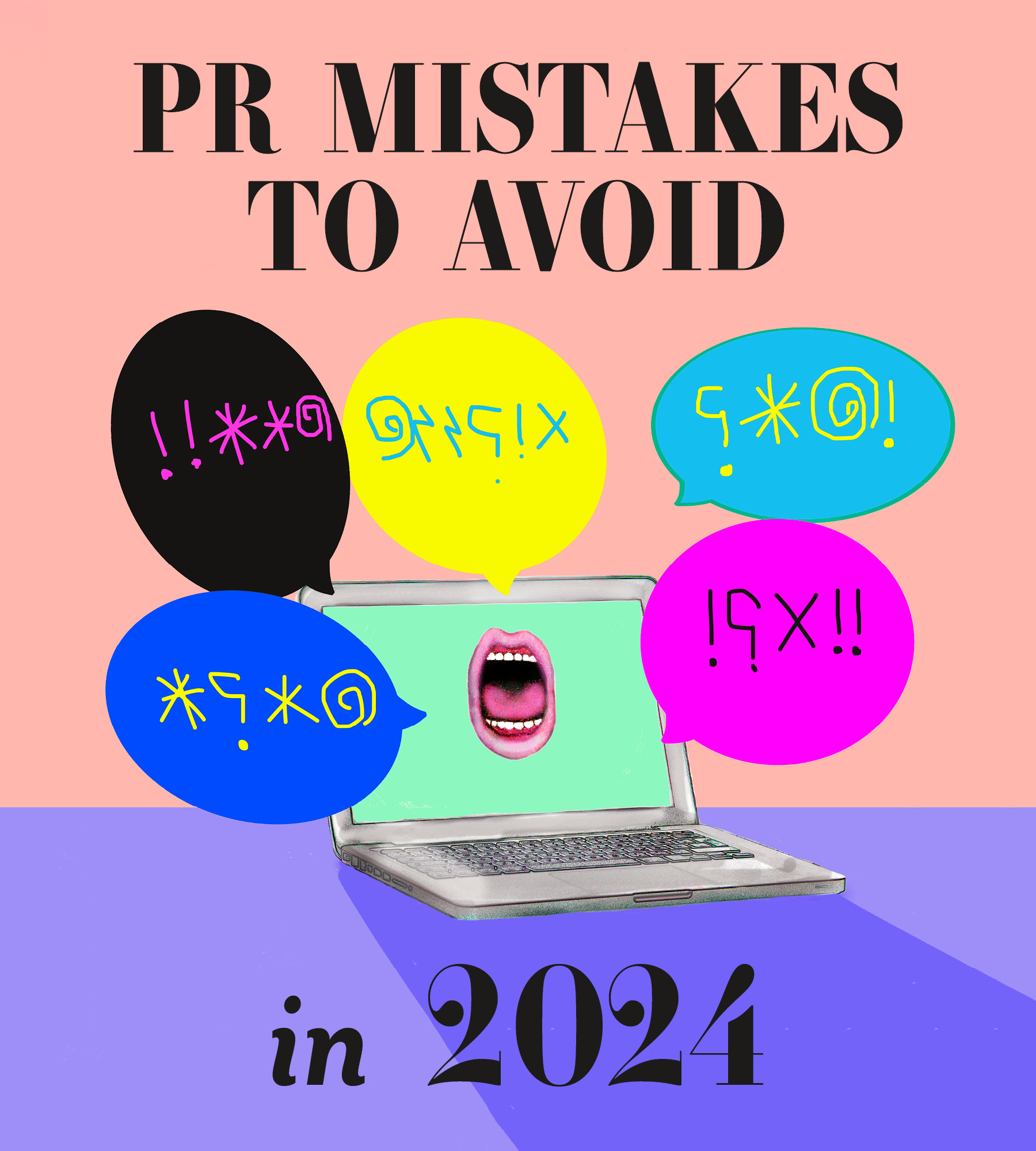Language
You can read the magazine in one of the following languages
PR and marketing professionals of today have to remain hypervigilant in today’s always-on business world. Organizations and influential brand leaders nowadays interact with their customers and followers in real-time and on highly visible public platforms from their websites, apps and social media accounts, with their reputations riding high on every public action and message.
PR professionals know better than anybody that a single misstep for a brand can spiral into a full-blown crisis.
There is no denying that accidents happen, but brands and public representatives have a moral duty to uphold a certain level of decorum when things go wrong. Consumers today have very little patience for mistakes for which companies do not proactively hold themselves accountable.
Innocuous and honest mistakes can be forgiven, but failing to be transparent toward issues, not to mention deflecting the blame or ignoring the incumbent problem(s) can result in heavy scrutiny.
The more time that passes when a business has to carefully navigate its PR strategy, the more difficult it is. As such, failing to meet high expectations can result in lost consumer trust and lasting reputational damage, depending on the severity and nature of the incident which resulted in negative press.

PR professionals know better than anybody that a single misstep for a brand can spiral into a full-blown crisis.
As we are well into 2024, PR and marketing experts must be increasingly vigilant about potential pitfalls across all their media and campaign components. Solid PR is essential for staying one step ahead of others in the press sector, but one negative social media comment, misrepresentation or perpetuation of conjecture rather than facts can harm a brand.
To avoid this, it requires constant oversight and supervision of all marketing components while empowering teams to quickly and decisively respond to issues, all while maintaining awareness of what audiences want and value.
Here are some of the biggest possible mistakes that PR teams should be heavily cautious to avoid as we move further into 2024.
Data breaches and cyber incidents have become an inevitability as digitization has skyrocketed since the start of the COVID-19 pandemic. Best-prepared organizations will have deployed enterprise-grade security measures such as vulnerability scans and managed detection and response plans, acting as fail-safe measures to safeguard assets and data.
However, it’s best to err on the side of caution and assume that incumbent security solutions are not 100 percent foolproof. Assuming that one vulnerability does get exploited – even if minor – this could have a drastic effect on customer or stakeholder information, product prototypes or intellectual property, especially if that data ends up in the public domain.
Depending on the industry, businesses could also be liable to regulators as well as consumers, leaving their reputations and finances worse off.
Should word break that you suffer a cyberattack (the inevitability is likely based on recent statistics), transparency and accountability are key when navigating the complexities. Consumers value this higher than if you attempt to sweep the issue under the rug or delay your responses and remediation plans too long. Their data could well have been compromised, which is very serious, and a swift, honest response is vital for:
• Maintaining trust with impacted individuals
• Complying with data breach notification laws
• Mitigating legal and regulatory risks
• Protecting your brand reputation
It’s wise to prepare messaging frameworks and clear processes for notifying impacted parties, investigating incidents and taking corrective actions.
In a crisis, accepting full responsibility is a difficult but necessary pill to swallow. Consumers have little tolerance for companies making hollow apologies, playing the victim or blaming others. Regardless of the incident or mistake, it’s important to own them transparently and with humility.
Take the United Kingdom’s recent Post Office incident as an example, when it awarded US$2 million in bonus payments to executives despite being in the middle of a statutory inquiry into the Horizon IT scandal. The Post Office was forced to admit that it had handled the process of rewarding senior executives who cooperated with the Horizon inquiry.

It’s wise to prepare messaging frameworks and clear processes for notifying impacted parties, investigating incidents and taking corrective actions.
As a guide, outline unambiguous steps for resolution, including any changes to policies, procedures, systems or staff. Commit and follow through with your actions, providing regular updates on progress and completion to show that you value the lessons learned in your mistake.
Making accountability a long-term commitment will do wonders for your brand rather than viewing it as a one-and-done gesture.
Brands are expected to share and exhibit values that reflect our diverse, multicultural society. Companies that fail to create inclusive and equitable campaigns risk alienating key audiences and appearing detached from reality, as well as their core values.
Diversity, equality and inclusion should be instilled firmly into a PR and marketing strategy from the outset. Brands should endeavor to include diverse perspectives from people of different backgrounds, cultures and experiences, using them to inform campaign narratives, creative assets, partnerships and media outreach.

Diversity, equality and inclusion should be instilled firmly into a PR and marketing strategy from the outset.
Regularly auditing brand imagery, messaging and deliverables will also help you reassess how inclusive your material is, and allow you to make adjustments.
Inclusive marketing shouldn’t just be viewed as a tick-box exercise; it makes wise business sense, as 36 percent of surveyed people have boycotted brands because of issues with representation and diversity.
PR professionals and marketers have the unenviable task of trying to set their brands far apart from the crowd, and in today’s fiercely competitive space, it’s increasingly difficult to do without making grandiose, provocative claims. Dispensing this kind of conjecture without any form of source or verification opens you up to heavy scrutiny.
Countless brands have faced severe backlash having dispensed – sometimes unknowingly – inflated claims, wild promises and ambiguous statistics. On a sociopolitical scale, there have been notable incidents where fake news and misinformation have spread like wildfire on social media.

The personalization imperative cuts across all PR and marketing channels.
The advent and emergence of innovative generative AI tools makes this type of claim easier to dispense unsupervised, and even harder to separate from genuine facts and tangible data.
This presents a huge problem for brands trying to maintain that competitive edge. It’s crucial to not be tempted by increased engagement and visibility if you can’t verify your claims, whether that’s exaggerating product capabilities or overpromising on customer expectations. Should customers see that the product does not live up to expectations after spending their hard-earned money, it could get ugly.
Ensure that any information you share – however frivolous – is rooted in factual and data-driven information that provides reassurance and validity to your claims. Set your audience’s expectations measuredly and without any unnecessary hyperbole or over-persuasive prose that you can’t back up.
Marketing professionals sector-wide understand the importance of thorough, accurate audience targeting and segmentation. Failing to dedicate appropriate resources and time to this task is inexcusable, especially for brands with established marketing and PR teams.
Create personalized, engaging and relevant content with appropriate calls-to-action for carefully chosen micro-segments of your target audience. These assets are exceptionally larger drivers of responses, clicks and conversions than mass generic messaging that offers viewers no additional value. Consider which stage of the marketing funnel applies best to specific individuals in your target audience who meet certain criteria.
For example, if they are unaware of your brand, deliver personalized assets and content that introduce your brand to these people. Conversely, for those who have browsed your site, explored your products, or interacted in some way, deliver more intricate content that speaks to their particular pain points, without insulting their intelligence.

The personalization imperative cuts across all PR and marketing channels, whether it’s sponsored social media ads, websites, emails, printed materials and beyond. Understanding exactly what your specific audience segments are looking for will help exponentially.
Humanizing brands through personalized messaging that’s been collaboratively created by subject matter experts is far more effective than casting a wide net for every possible person in the endless digital stratosphere.
If 2024 has taught us anything so far it’s that PR and marketing professionals cannot afford to make unforced and avoidable errors that could potentially erode consumer trust and brand reputation – two things which organizations will have worked diligently to establish. Taking note of these possible errors above will hopefully prepare you for a turbulent few months ahead, as economies and political landscapes look increasingly more volatile.

Dakota Murphey
Contributor Collective Member
Dakota Murphey is a freelance writer in the United Kingdom. She has more than 15 years’ experience creating content for a number of authoritative sites. Dakota writes on topics ranging from travel, photography and sustainability to company growth, business trends and branding. Learn more at https://www.dakotamurphey.co.uk/
